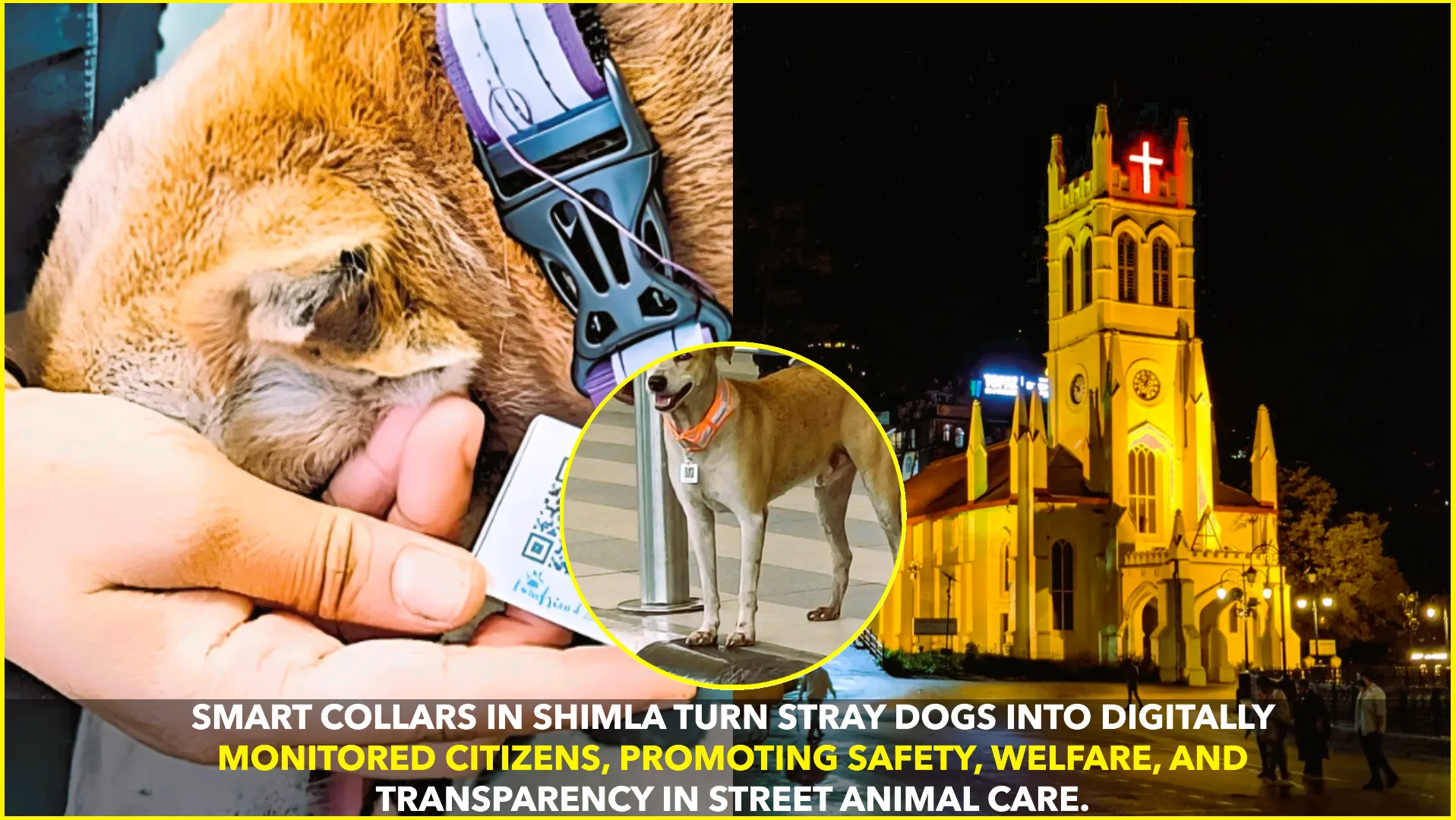In an innovative leap blending compassion and technology, Shimla Municipal Corporation has launched a groundbreaking campaign: stray dogs roaming the city’s streets are now being transformed into “digitally monitored citizens,” thanks to collars embedded with GPS trackers and QR codes.
The Campaign in Action
Over a focused 20- to 25-day period, the city plans to vaccinate, sterilise, and tag roughly 3,000 stray dogs. These collars serve dual purposes: the GPS tracker enables real-time monitoring of each dog’s movements, while the QR code—when scanned—reveals vital data such as vaccination status, sterilisation history, age, health condition, and behavioural notes.
This effort is widely seen as India’s first comprehensive municipal-level push into digital tracking of stray animals. Alongside this, roaming teams of animal health experts from Goa, Maharashtra, and Delhi—overseen by Dr. Anil—are working across Shimla to implement this campaign Devdiscourse.
Why It Matters
1. Enhancing Public Safety
With over 800 dog-bite cases recorded earlier in 2025, stray dogs have become a major concern for public safety in Shimla Telegraph IndiaDevdiscourse. GPS tracking allows authorities to identify areas where dogs tend to roam in groups, helping prevent potential incidents before they escalate.
2. Animal Welfare with Transparency
The collars themselves serve as portable identity cards. Citizens, animal welfare groups, and city officials can easily view each dog’s health records via the QR code. This transparency helps ensure that each animal receives humane treatment and that interventions are measured and appropriate.
3. Smarter Population Management
Knowing which dogs have been sterilised means efforts aren’t repeated unnecessarily. The digital system helps compile accurate data, enabling a more strategic and ethical approach to managing the stray population sustainably Curly TalesDevdiscourse.
4. Humane Handling of Aggressive Dogs
Dogs identified as dangerous or consistently aggressive are being moved to a dedicated facility—the Tutikandi Dog Hut—rather than being euthanised or left to roam. They’re cared for out of public spaces, ensuring humane treatment while safeguarding safety Curly TalesDevdiscourse.
What’s Special About the Approach
Shimla’s drive is hailed as the first of its kind in India—a blend of medical outreach, field research, and digital innovation. Collar data will be invaluable for analyzing movement patterns and understanding how dogs interact with different neighbourhoods. This knowledge could help predict hotspots of bite activity and improve preventive measures.
As part of this push, awareness campaigns are also underway. Schools and local ward offices are engaging the public, teaching residents not just how to care for strays, but also how to responsibly manage food waste and avoid unintended encouragement of stray congregation Curly Tales.
A Model for Other Cities
If successful, Shimla’s tech-driven initiative could inspire other cities across India facing similar challenges. Balancing public health, ethical pet management, and community engagement is no easy task—but the early results suggest this collaborative, high-tech method may be a promising blueprint.
Looking Ahead
The campaign is still unfolding, but already, its digital collars symbolize a shift in how we view and care for street animals. They are no longer invisible citizens; instead, each dog now carries a transparent record of its health and journey. Innovators hope this humane, data-driven model will reduce bite incidents, slow population growth, and build a city where community and compassion walk together—one tagged tail at a time.










